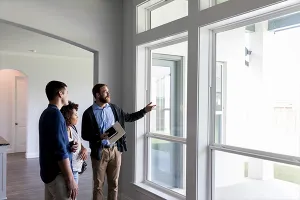
Home sales are moving in a seesaw pattern as double-digit home price gains and near-record-low inventory continue to keep aspiring buyers from purchasing a home. Existing-home sales—completed transactions that include single-family homes, townhomes, condos, and co-ops—dropped by 7.2% in February compared to January. Sales are down 2.4% compared to a year ago, the National Association of REALTORS® reported Friday.
“Housing affordability continues to be a major challenge, as buyers are getting a double whammy: rising mortgage rates and sustained price increases,” says Lawrence Yun, NAR’s chief economist. “Some who had previously qualified at a 3% mortgage rate are no longer able to buy at the 4% rate.”
Monthly housing payments have jumped by 28% compared to a year ago. “The market remains swift with multiple offers still being recorded on most properties,” Yun says. He adds that rising rates and escalating prices have prevented many consumers from making a home purchase.
“The sharp jump in mortgage rates and increasing inflation is taking a heavy toll on consumers’ savings,” Yun says. “However, I expect the pace of price appreciation to slow as demand cools and as supply improves somewhat due to more home construction.”
Here’s a closer look at top housing indicators from February:
- Home prices: The median existing-home sales price increased to $357,300—a 15% jump compared to a year earlier. Prices increased in every region across the country last month.
- Inventory: Total housing inventory is up 2.4% from January’s record low. But inventories are still down 15.5% from a year ago. Unsold inventory is at a 1.7-month supply at the current sales pace.
- Days on the market: Eighty-four percent of homes sold in February were on the market for less than a month. Properties typically remained on the market for 18 days in February, down from 19 days in January and 20 days from February 2021.
- First-time buyers: First-time buyers comprised 29% of sales in February, down from 31% compared to a year ago.
- Investors or second-home buyers: Individual investors or second-home buyers purchased 19% of homes in February, up from 17% a year ago. Investors and second-home buyers tend to account for the largest amount of all-cash sales, which made up 25% of transactions in February (up from 22% a year ago).
- Distressed sales: Foreclosures and short sales represented less than 1% of sales in February, continuing an ultra-low presence in the housing market.
Regional Breakdown
The South was the only major region of the U.S. that posted an increase in existing-home sales last month compared to a year ago, according to NAR’s data. “Employment is vital for housing demand,” Yun says. “The Southern states are seeing faster job growth, and consequently it’s the only region to experience a sales gain from a year ago.”
Here’s how existing-home sales fared in February across the country:
- Northeast: Existing-home sales decreased 11.5% from month to month in February and saw a 12.7% drop compared to a year ago. Median price: $383,700, up 7.1% from one year ago
- Midwest: Home sales fell 11.3% compared to the prior month, a 1.5% decrease from February 2021. Median price: $248,900, a 7.5% climb from February 2021.
- South: Home sales dropped 5.1% in February from the prior month, increasing 3% from one year ago. Median price: $318,800, an 18.1% jump from one year prior.
- West: Existing-home sales fell 4.7% from the previous month, down 8.3% from one year ago. Median price: $512,600, up 7.1% from February 2021.









